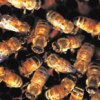
ASSE Sends 'Killer Bees' Alert
The American Society of Safety Engineers, representing more than 32,000 occupational safety, health, and environmental professionals, is alerting its members about the rapid growth of the harmful, aggressive Africanized Honey Bees (AHBs) in the United States and their negative impact on European Honey Bees (EHBs), agriculture, and workplace safety.
First found in southern Texas in 1990, AHBs are now located throughout the south, southeast, and southwest states, including California, and are more likely to attack people and animals near their nests. The danger is that AHBs are more aggressive than EHBs and garden bees. Although the sting from an AHB is no more harmful than one from the common garden bee or EHB, AHBs are known as "killer bees" because they defend their nests more aggressively and attack with less provocation--and in larger numbers. They are more apt to sting quickly and multiple times.
Over the last several years, numerous attacks have been reported in California, Arizona, New Mexico, Florida, and Texas, and recently the bees also have appeared in Utah. A Texas man died last week from a bee swarm attack and a landscape worker in Florida was attacked recently by bees while at work cutting grass. Also recently, a worker in Las Vegas was hospitalized after being attacked by a swarm of AHBs while he was operating a backhoe.
Emergency response agencies in these states have implemented first responder training programs as well as public education efforts. According to reports, the Africanized (hybrid) bees were created in the mid-1950s when a researcher brought African bees to Brazil and bred them with European honeybees, with the intent to produce hybrid bees that could tolerate tropical environments. These hybrids, along with African queens, were then accidentally released into the wild the next year. The hybrid bees freely interbred with local bees, with the Africanized genetics preferentially retained over time, eventually dominating bee populations. The AHB trait rapidly spread throughout South and Central America, reaching Texas in 1990.
In an effort to prevent injuries from the AHBs, ASSE has developed a safety tip sheet and a list of resources for members and the public on bee safety. AHBs continue to attack people and animals at work, at home, and in communities. These attacks can be deadly for those unable to recognize their danger and who are unprepared to thwart an attack, ASSE notes.
"This is a major threat," says Teresa Dwyer, CSP, an ASSE member and SH&E professional in Boca Raton, Fla. "It can cost several hundreds of dollars to have a professional remove an AHB hive and, without the correct protective equipment and training, the potential rescuer may become an additional victim."
According to ASSE, SH&E professionals are concerned about the growth in the AHB population because of:
- their potential to negatively impact the economy;
- their threat to public safety;
- the fact that they are not easily discernable from other less dangerous bees;
- AHBs swarm more often than EHBs, thus the AHB populations increase more rapidly;
- homeowners are not aware of these dangers and do not know how to react to the dangers of the AHB; and,
- the need to train emergency personnel, municipal workers, and SH&E practitioners on how to identify, prepare for, and handle this risk at work, at home, and in the community.
"There are activities all workers, employers, homeowners, and communities can do now to protect their business, home, family, workers, and pets," Dwyer notes. To prepare for a possible AHB attack, it is suggested that people: 1) be attuned and alert to buzzing in the environment--this may indicate a nest or swarm of bees; 2) use care when entering sheds or outbuildings where bees may nest; 3) examine work areas before using power equipment such as lawn mowers, weed cutters, and chain saws--the noise and vibration excites and alarms the bees; 4) be alert when engaged in all outdoor activities; 5) discuss with a doctor bee sting kits and procedures if sensitive to bee stings; 6) pet safety--do not tie or tether animals near known bee hives or nests; and, 7) stay away from honey bee colonies. For a full list of suggestions, go to www.asse.org/newsroom and click on "Bee Safety."
If you are stung, officials recommend removing the stingers by scraping--use a flicking action with a finger nail or credit card--then apply ice and a paste of baking soda, and seek medical attention immediately. If worker exposure to AHBs is a possibility, ASSE suggests that employers perform a risk assessment with their SH&E professional and provide employees with properly fitting personal protective equipment such as full length "bee suits," protective veils, hats, and gloves with sleeve length extensions.
For more information, visit the U.S. Department of Agriculture's Agricultural Research Service at www.ars.usda.gov/Research/docs.htm?docid=11059&page=3 and the Florida Department of Agriculture and Consumer Services at www.doacs.state.fl.us/pi/plantinsp/ahb.html.